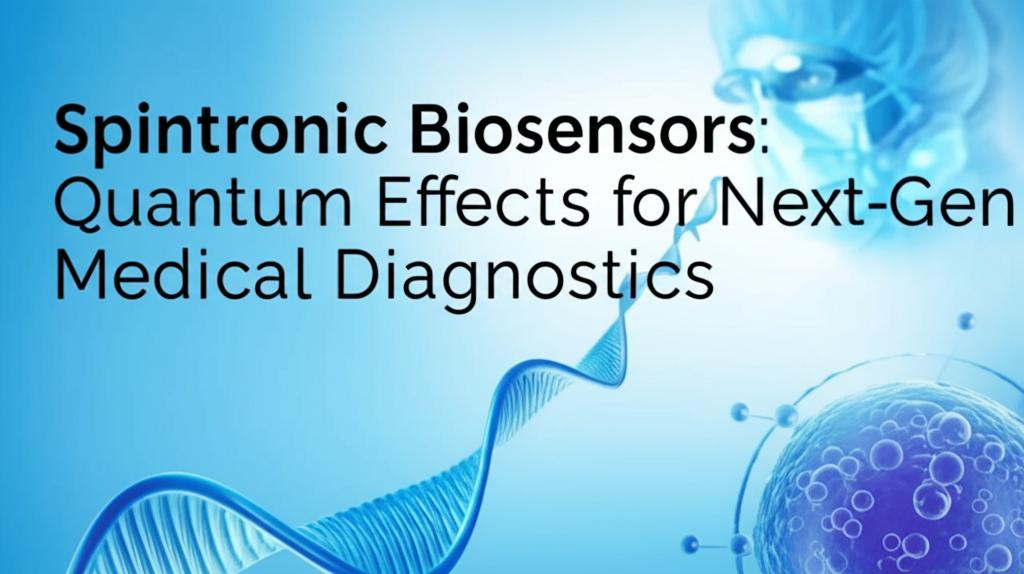The world of medical diagnostics is on the cusp of a revolution, and the driving force is the fascinating field of spintronics. This emerging technology, which harnesses the intrinsic spin of electrons in addition to their charge, is paving the way for biosensors with unprecedented sensitivity and capabilities. By tapping into quantum mechanical effects, spintronic biosensors promise to detect diseases earlier and more accurately than ever before, transforming healthcare as we know it.
At its core, spintronics offers a unique way to sense the biological world. Unlike conventional electronics that rely solely on the flow of electrical charge, spintronic devices are sensitive to the subtle magnetic fields created by biological molecules and their interactions. This allows for the development of highly specific sensors that can detect minute changes in electron spin alignment when they encounter target biomarkers, such as proteins or DNA fragments indicative of disease.
One of the most exciting aspects of spintronic biosensors is their potential for label-free and real-time detection. Traditional diagnostic methods often require labeling molecules with fluorescent tags or other markers, a process that can be time-consuming and may interfere with the biological interactions being studied. Spintronic sensors, however, can directly detect the presence of target molecules by sensing their intrinsic magnetic signatures or the changes they induce in magnetic nanoparticles. This opens the door for rapid, non-invasive diagnostics, potentially even at the point of care.
The quantum effects at play in these devices are key to their remarkable sensitivity. Phenomena like giant magnetoresistance (GMR) and tunneling magnetoresistance (TMR) allow for the detection of extremely weak magnetic signals. Imagine being able to identify cancer biomarkers at the earliest stages of disease, when concentrations are incredibly low, or to monitor neurodegenerative disorders with a precision previously unimaginable. Spintronic biosensors are bringing these possibilities closer to reality.
Researchers are actively developing various types of spintronic biosensors, including magnetoresistive sensors and those based on magnetic nanoparticles. These sensors are being integrated into innovative platforms like lab-on-a-chip systems, which can perform complex diagnostic analyses on a miniature scale. Such advancements are crucial for developing portable, cost-effective diagnostic tools that can be deployed in diverse healthcare settings.
The implications for medical diagnostics are vast. Early and accurate disease detection is paramount for effective treatment. Spintronic biosensors hold the promise of identifying diseases like cancer, cardiovascular conditions, and infectious diseases with greater speed and precision. Furthermore, their ability to monitor biological processes in real-time could revolutionize personalized medicine, allowing treatments to be tailored to individual patients based on their unique molecular profiles.
Beyond diagnostics, spintronics is also showing potential in medical imaging. Spintronic-based sensors could significantly enhance the sensitivity of techniques like Magnetic Resonance Imaging (MRI), leading to higher-resolution images with lower magnetic field strengths.
While there are still challenges to address, such as ensuring biocompatibility and validating these technologies in clinical settings, the pace of innovation in spintronic biosensors is rapid. Continued research and interdisciplinary collaboration are fueling advancements in nano/microfabrication techniques, material science, and our understanding of quantum phenomena at the biological interface.
The journey of spintronic biosensors from laboratory research to widespread clinical application is well underway. As these quantum-powered devices become more sophisticated and accessible, they are set to redefine the landscape of medical diagnostics, ushering in an era of earlier detection, more personalized treatments, and ultimately, improved patient outcomes. The future of healthcare is looking increasingly quantum.

